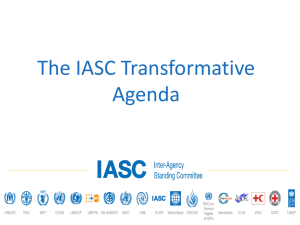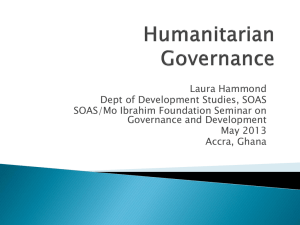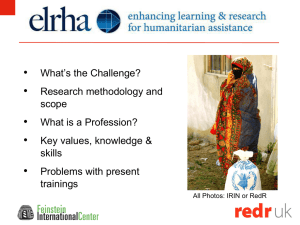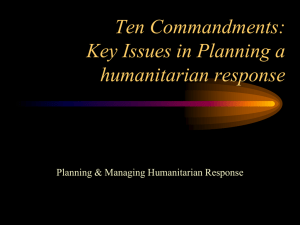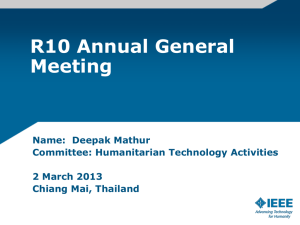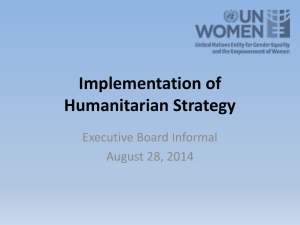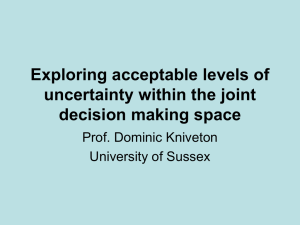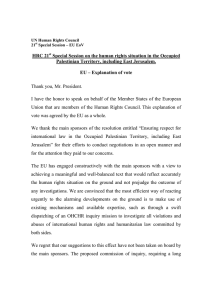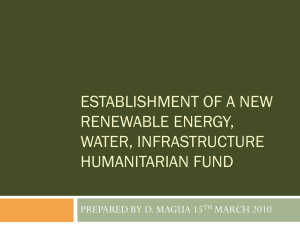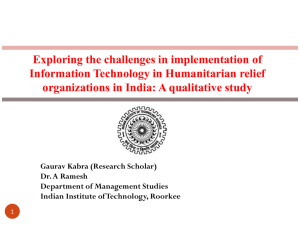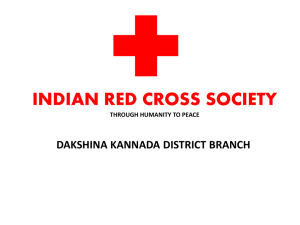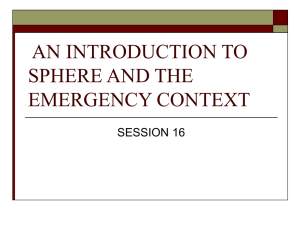UN Women in Humanitarian Action
advertisement
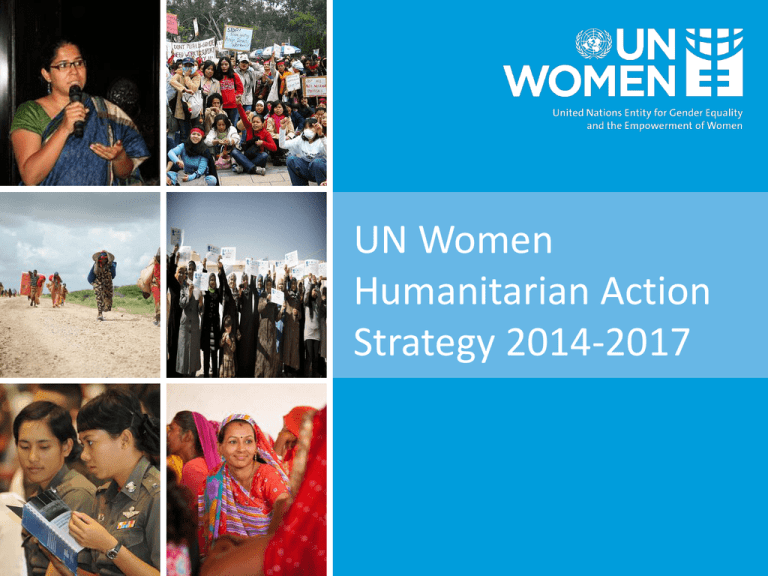
UN Women Humanitarian Action Strategy 2014-2017 Background Crises are not gender-neutral; women, girls, boys and men of all ages - are affected differently and their needs, capacities and coping strategies are distinct. And just as crises are not gender-neutral, humanitarian action cannot be either. Integration of gender in Humanitarian Action has fallen largely to the Inter Agency Standing Committee (IASC) Gender and Humanitarian Action subworking group with limited mandate to influence policies and operations. Engendering Humanitarian Action needs to be systematic and sustainable instead of relying heavily on experience and personal initiatives of ‘gender champions’. Mission Statement* “Grounded in the vision of equality enshrined in the Charter of the United Nations, the composite entity will work for the elimination of discrimination against women and girls; the empowerment of women; and the achievement of equality between women and men as partners and beneficiaries of development, human rights, humanitarian action and peace and security”. *Secretary-General’s comprehensive proposal for the new entity: A/64/588, para. 5 Contextual Framework for UN Women’s Engagement Mandate for UN interagency coordination and leadership on Gender Equality and Women’s Empowerment ; Existing and emerging partnerships with Humanitarian UN Agencies; Strong relationship with Women’s Movement and Gender Machineries; Ongoing work and presence in crisis-affected/disaster prone countries and regions; Reform processes that are shaping the future of Humanitarian Action. UN Women in Humanitarian Action • Preparedness and Disaster Risk Reduction • Humanitarian Response and Early Recovery • Post Conflict and Post Disaster Needs Assessment Humanitarian Action in UN Women’s Strategic Plan 2014-17 Under Impact 4: Peace and security and humanitarian action are shaped by women leadership and participation Outcome 4.3 :Intergovernmental gender equality commitments in humanitarian action are adopted and implemented. • Result 1: The development of evidence-based knowledge, including performance measurement and accountability frameworks; • Result 2: Enhancing national and regional capacity of institutions and partners; • Result 3: Strengthening gender-responsive coordination mechanisms and gender equality programming ; Priority Approaches UN Women’s Humanitarian Strategy sets out a three tier implementation approach: Coordination and Leadership to mainstream gender equality and women’s empowerment in Humanitarian Action Operational Coordination at country level through Cluster Coordination System and Gender Theme Groups Targeted programme interventions based on demand and comparative advantage Development of evidence based knowledge Priority Interventions Seek IASC membership and continue engagement through the IASC Gender Reference Group and GenCap Steering Committee; Establish and maintain UN Women Crisis Management Capacity and develop standard guidance on organizational response to humanitarian action; Undertake evidence-based research and knowledge dissemination; Influence normative policies, frameworks and guidelines including reporting on Gender and Accountability in Humanitarian Action; Pilot country-level action in selected six countries in partnership with OCHA where UN Women already has on-going work in humanitarian action; Strengthen the engagement of national women’s machineries in humanitarian action. Next Steps Build on UN Women’s ongoing work in humanitarian action; Develop implementation plan, including a resource mobilisation strategy, for roll out of UN Women’s Humanitarian Strategy; Establish partnerships with humanitarian action stakeholders (government institutions, civil society, grassroots organizations, academia). Thank you
